Sage Advice: Plant salvia for a deer-resistant garden
- Helen Newling Lawson

- Oct 28, 2019
- 4 min read
Updated: Oct 6, 2020
Salvia, or sage, is a broad category (or genus) of plants that generally offer great deer resistance. The exception is the tender variety usually grown as an annual (Salvia splendens), but let's be honest - that one can be a little garish and uninspired anyway. Have I mentioned my general dislike of bedding annuals? But with approximately 900 other species to choose from, I can firmly state that the Salvia family is a go-to source of a wide variety of deer-resistant plants.
Please note: links in this article go to my Amazon Affiliate account, which earns me a small commission (but costs you nothing).


Depending on the variety you choose, you will also get color, drought-tolerance, fall blooms, pollinator appeal, hummingbirds galore, and even tasty seasonings for your dinner plate (yes, the culinary herb is just one of the many sages you can plant, and is pretty enough to be used outside the kitchen garden).
I tend to refer to any of the non-bedding varieties as "perennial sages," but I realized my Zone privilege is showing. Many of my favorites like 'Black and Blue' sage (Salvia guaranitica) and autumn sage (S. greggii) are indeed hardy to where I live in Zone 7, but that leaves a good many gardeners to enjoy these as annuals. Meanwhile, in their native climates, some of the sages I consider a herbaceous perennial are actually shrubs (Mexican sage can get to be 10 feet tall - I'd love to see that!). So, let's just stick with botanical names to keep things accurate. I will wrap up this blog post with a list of some of the most popular types of sage for your garden.
While many varieties of salvia bloom for months and the highly popular hybrid variety 'May Night' (or 'Mainacht') blooms in May as one might expect, many sages come into their glory in fall.

In fact, the 'Golden Delicious' pineapple sage (S. elegans) I have been enjoying as a trial sample from Proven Winners will not bloom until triggered by the shorter days of fall. The brilliant yellow foliage is enough of a reason to grow it, but sure enough, within the first few days of October, I spotted the first of the brilliant scarlet flowers. Now I will watch to see if the hummingbirds enjoy this as much as they've loved the 'Black and Blue' flowers all summer. I love that this plant may help give them some late season feedings before they start migration. I also recently learned that the flowers are tasty for people, too, with a flavor that reminds me of honeysuckle nectar.
Shop for Salvia plants through my Amazon Affiliate Program:
How to Grow Salvia
It's generally quite easy to grow salvias. They are members of the mint family, and some varieties will also spread by rhizomes, although not as aggressively as culinary mint. They prefer deep, occasional watering instead of frequent sprinkling, and well-drained soil is often the key to their winter survival in areas on the edge of their Zonal range. Deadheading can encourage more blooming. Many have hairy or strongly scented foliage, which helps to keep the deer away. Mexican giant whitefly can be a pest.
Designing a Deer-Resistant Garden with Salvias


With a range of flower colors, including white, red, salmon, blue, purple, and nearly black, there is a flowering sage for every garden palette. Some offer quite unusual (sky blue Salvia azurea ) or intense colors (hybrid Salvia 'Amistad'), and others have calyxes surrounding the petals that offer a contrasting or deeper hue. I particularly like the Skyscraper™ series, which offers color combos like orange and purple in one flower. You can also look to some varieties to provide interesting foliage, including purple-leaved culinary sages (S. officinalis).
The loose, billowy form of some of the shrubbier varieties, like autumn sage, make them a good fit for cottage and other informal gardens. While they can get to be good-sized statement-making plants, they blend well with other plants thanks to their airy growth habit and smallish flowers. I've often seen them paired with Amsonia to good effect, with the yellow fall foliage on the amsonia providing a bright contrast and background to the fall-blooming varieties.

Top Sages to Try in Your Garden
Silver sage
Salvia argentea
Zones 5-8
Fuzzy, silvery leaves similar to lambs ear are a great addition to a white garden or anywhere you need a cooling neutral.
Texas sage
Salvia coccinea
Zones 9-11
Bushy and compact, with dark green leaves. Varieties bloom in colors from red, salmon, coral, pink, and white. 'Lady in Red' is an award-winning variety noted for its performance in warm climates. At around two feet tall, it works well as a bedding annual.

Pineapple sage
Salvia elegans
Zones 8-10
Try 'Golden Delicious' for bright greenish-yellow foliage all season, topped by bright crimson edible flowers in fall.
Mealycup sage
Salvia farinacea
Zones 8-10
Short and shrubby, this tender perennial with sturdy upright blue flower spikes makes a nicer (in my opinion) alternative to the typical annual salvia.
Anise-scented sage
Salvia gaurantica
Zones 8-10
This species includes the hummingbird magnet 'Black and Blue' sage. Forms a dense clump of emerald green foliage, about four feet tall and wide, and will die back after frost. Dark blue flowers from late spring to frost. Where winter hardy, it will return as a perennial the next year.
Zones 6-9
Bright lipstick-hued flowers cover this open, airy plant with small leaves. Wonderful for a punch of color in the fall garden.
Zones 8-10
Shrubby with fuzzy silvery foliage and long, curving flower spikes covered in light lavender flowers in late summer to fall.

Zones 4-9
A long-blooming, cold-hardy salvia with numerous cultivars. Shown is Rose Marvel from Darwin Perennials.
Culinary or common sage
Salvia officinalis
Zones 6-9
This is the variety grown as a culinary herb, and wonderful for flavoring stuffing, poultry, and pork. Varieties like 'Purpurescens' or 'Aurea' also offer ornamental interest.
Wood sage
Salvia x sylvestris
Zones 4-8
More winter hardy than most sages, this group of short, bushy hybrid sages with long flower spikes includes the popular midnight blue variety 'May Night'. Other selections are available in pink or rose.

Like this article? Pin it!





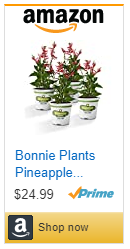
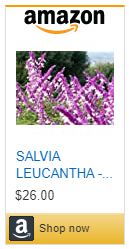
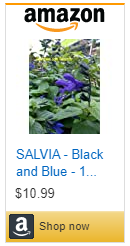

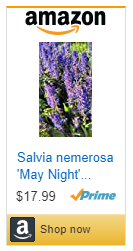
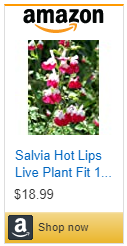



Comments